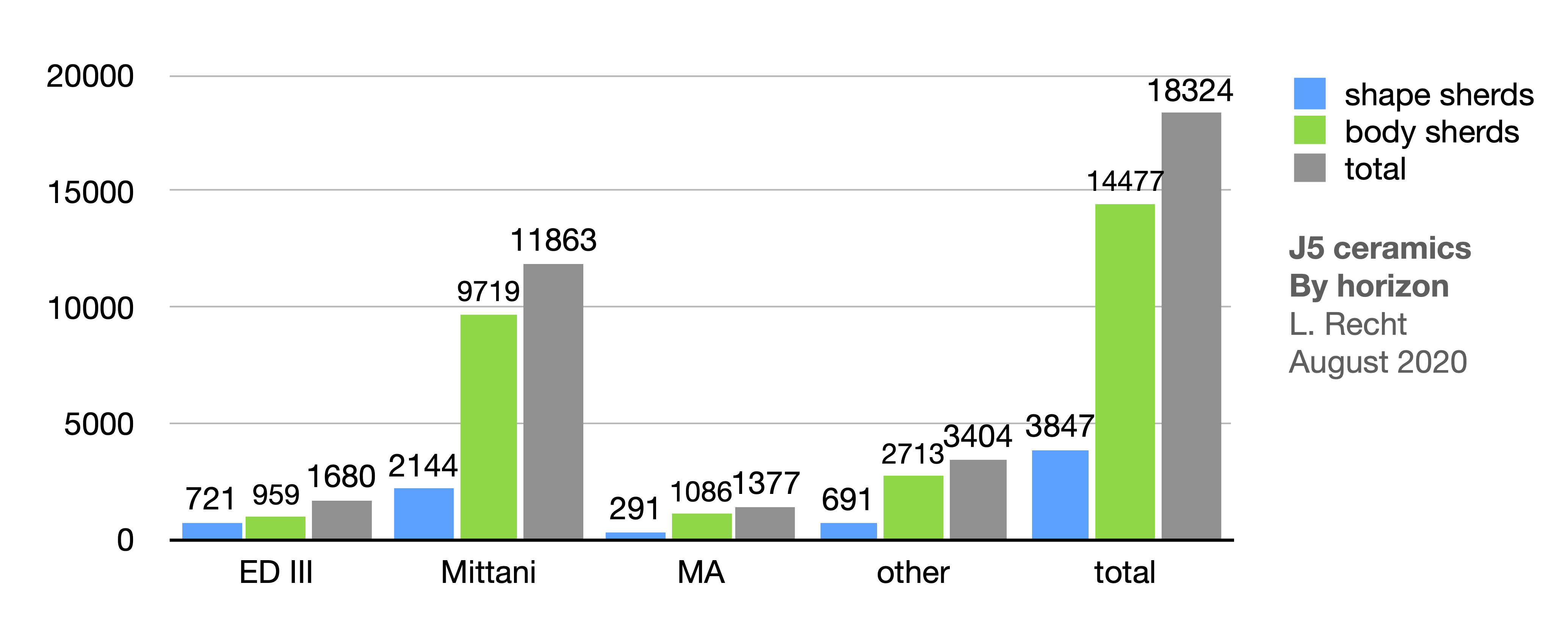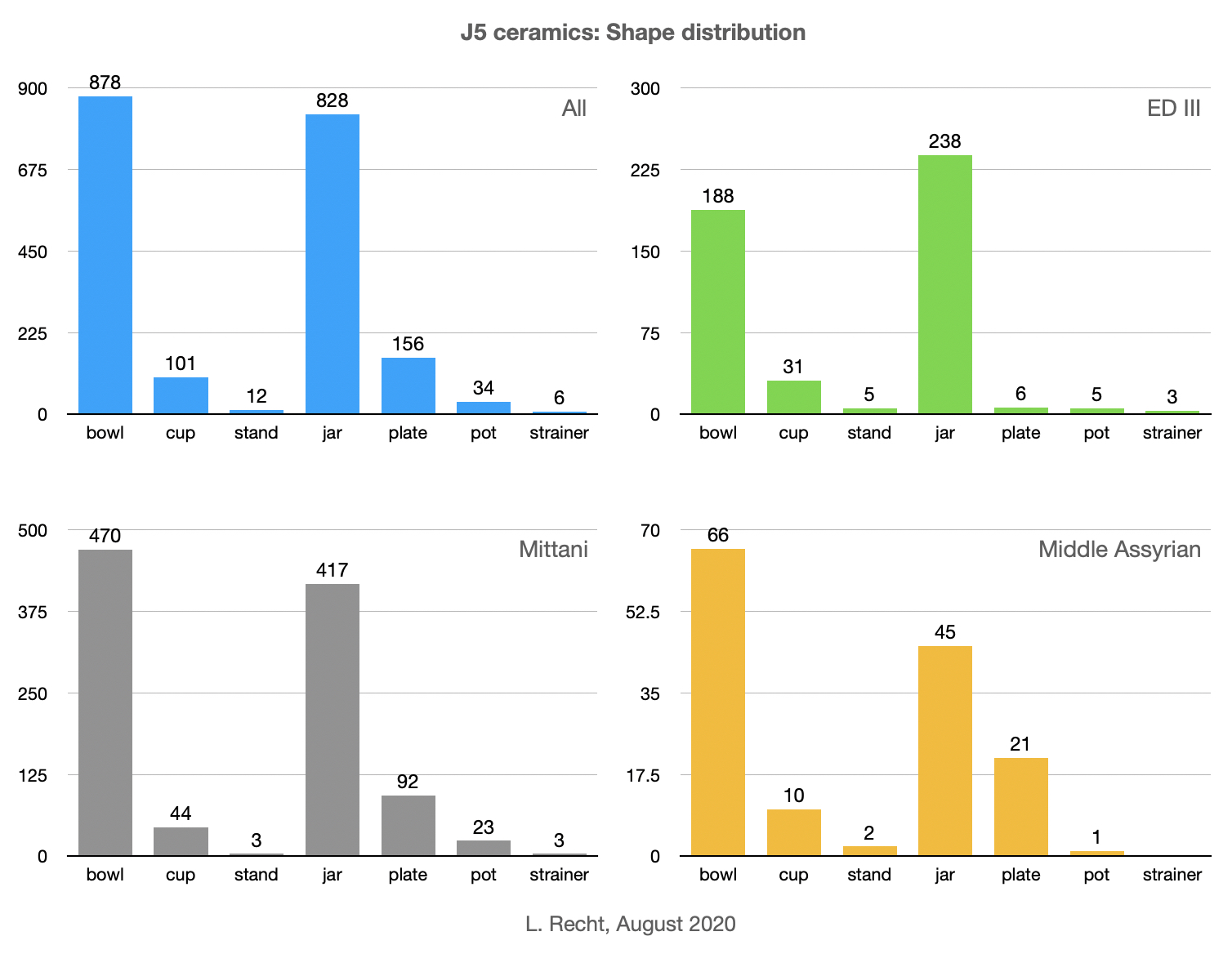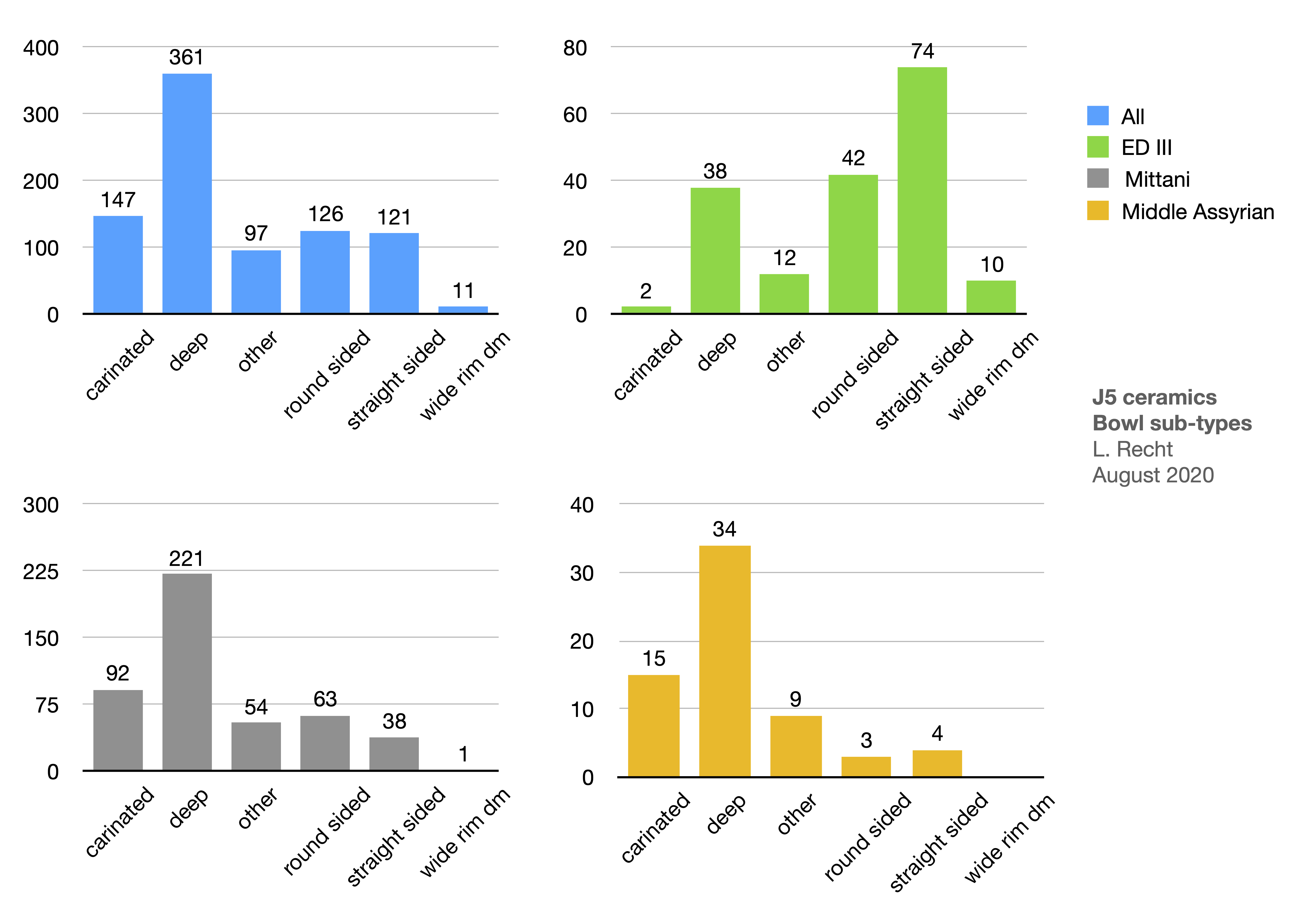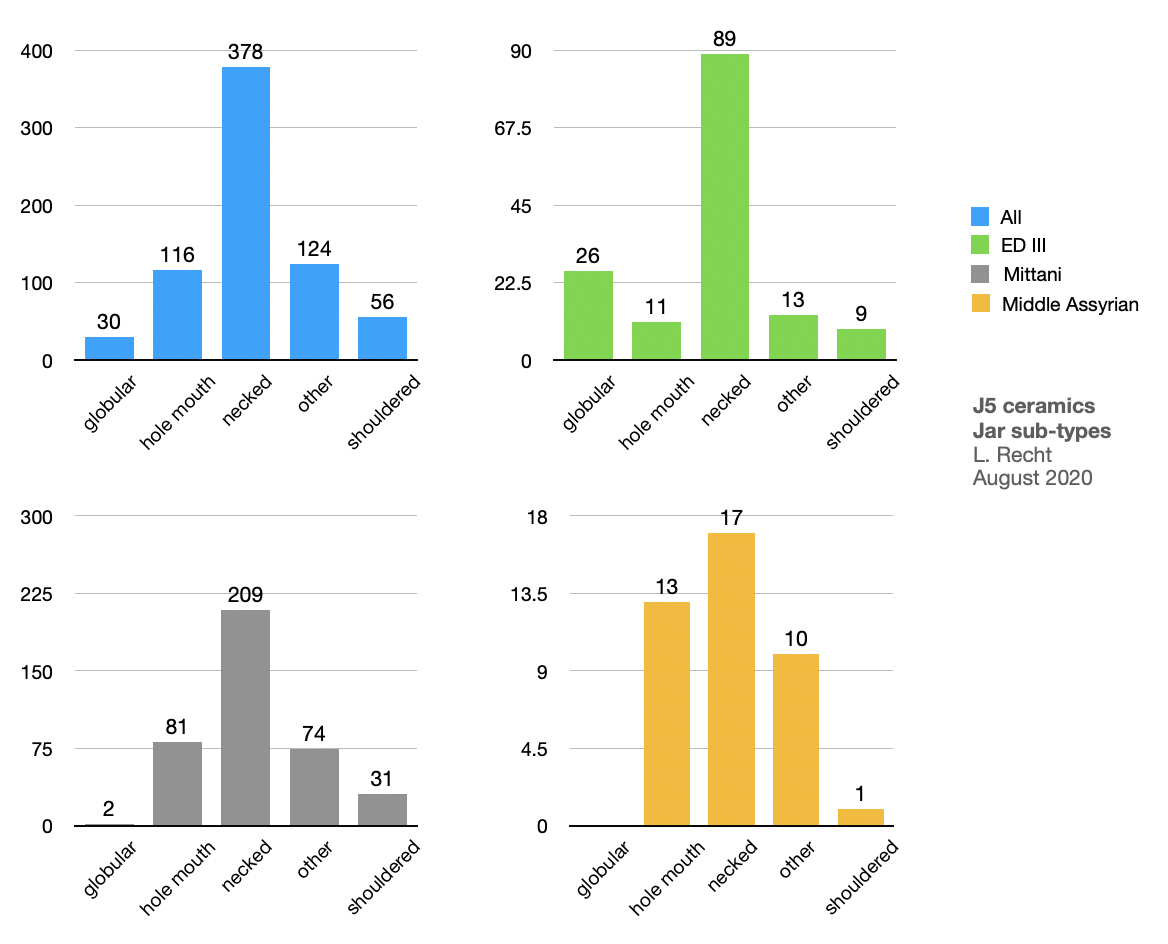Back to top: Ceramics from Unit J5
Methodology and corpus
All ceramic sherds from Tell Mozan are processed according to a
standardised procedure in the field, and analysed based on a specific set of
typological criteria, established and supervised by Marilyn Kelly-Buccellati.
A total of 18,324 sherds have been collected and analysed for J5.
Of these, 3847 are shape sherds, and 14,477 are body sherds. The
individual sherds for J5 can be found in the righthand menu under qp pottery.
The ceramics primarily come from Mittani strata (64.7%), but ED III is also
an important period in this unit (10.2%). A smaller number of sherds belong to Middle Assyrian strata (7.5%).
The remaining ceramics come from burials and topsoil layers.

J5 was the first unit where we found well-stratified Middle Assyrian layers -
assemblages of these can be found in the
J5 assemblages
f1,
f3 and
f4.
Back to top: Ceramics from Unit J5
Wares
By far the most common ware at Tell Mozan is Chaff Temper ware (CH): this is also the case for J5, where CH consistently predominates through all horizons. The finer version FC is the second-most common in all horizons, but beyond this, we start to see interesting changes. While Calcite Temper ware (RC),
Wet Smoothed ware (WS) and
Simple ware (S)
occur in significant numbers in ED III, they proportionately fall in popularity in the Mittani horizon; in both Mittani and Middle Assyrian strata, a greater proportion of
Pebble Tempered ware (P) is present.
For more on wares at Tell Mozan, see CERAMICS book wares.

Back to top: Ceramics from Unit J5
Shapes
As elsewhere on the site, bowls and jars are the most commonly found shapes.
Looking at the overall shape types by horizon, we can note interesting changes.
In the ED III period, jars predominate, although there is an almost even number of
open and closed shapes when combined. In contrast, in the Mittani period, open shapes
(bowls, cups, plates) are more common. The Middle Assyrian period sees more plates and platters.
For more on shapes at Tell Mozan, see CERAMICS book shapes.

*Note: Shapes with less than five examples in total were not included in the statistics here.
Back to top: Ceramics from Unit J5
Sub-shapes
A deeper look at the sub-shapes further elucidates differences between ED III on the one hand,
and Mittani and Middle Assyrian on the other. In the former, straight sided and round sided bowls were popular, with more deep and carinated bowls in the later. Cups remain more or less the same throughout, and necked jars were also most common. But after necked jars, we can see that the globular shape was found in ED III, but almost disappeared after this, and hole mouth and other jars become more popular, especially so in the Middle Assyrian period.



Back to top: Ceramics from Unit J5
Assemblages
Some ceramic sherds from J5 have been arranged in
assemblages for various points of interest.
The assemblages were born to show specific informations
(typical or unusual sherds in a feature/stratum, typical decorations, typical shapes or ware).
They are usually belong to a specific feature or stratum, but may also come from several features to show, for example, specific decorative patterns. The assemblages from J5 especially focus on the material from Middle Assyrian strata.
For the ceramics at Tell Mozan in general and the typology and stratigraphic
characteristics, go to the digital CERAMICS book.
Back to top: Ceramics from Unit J5